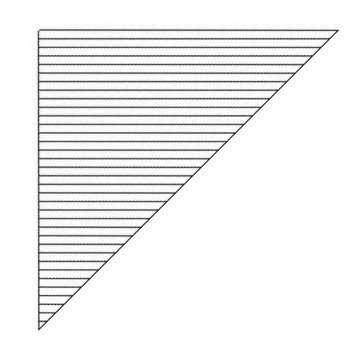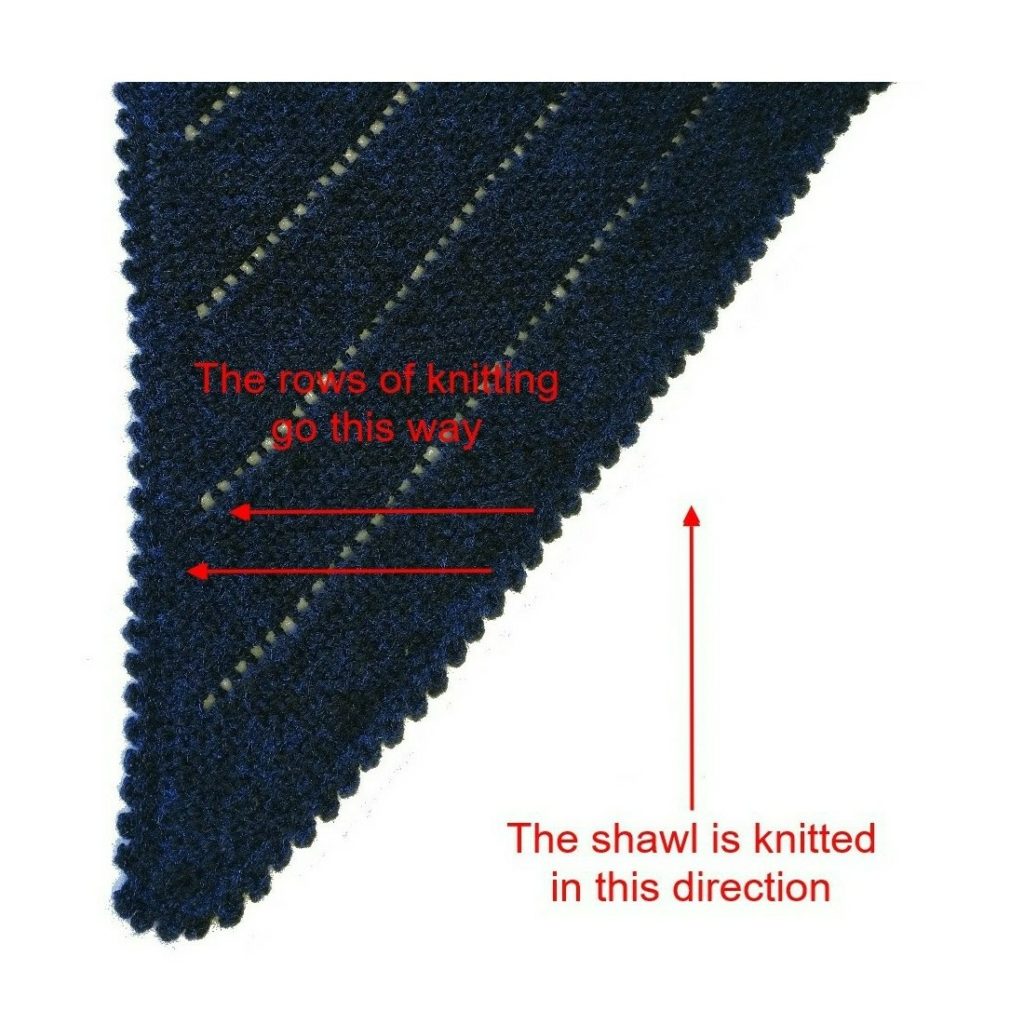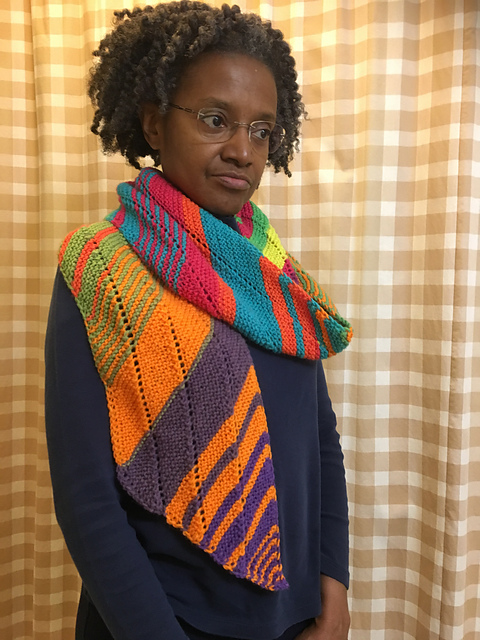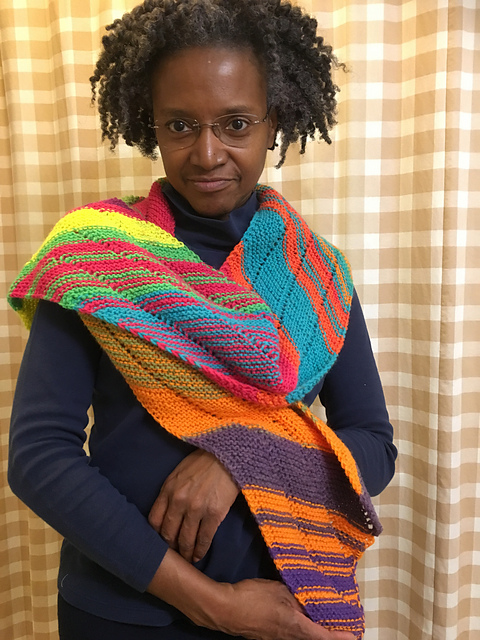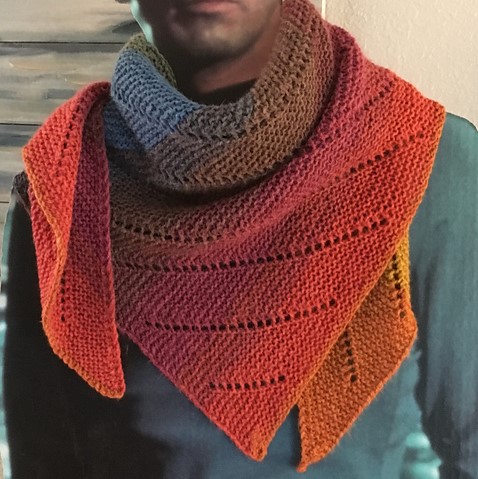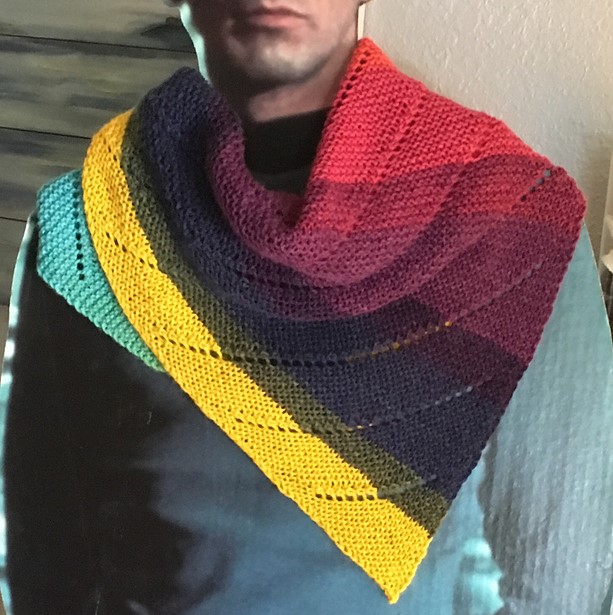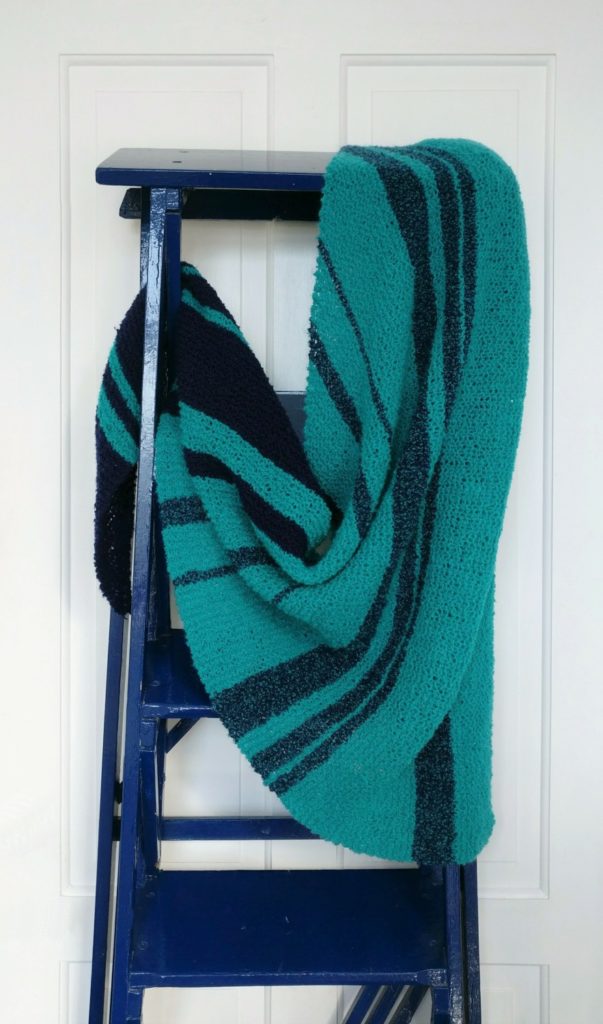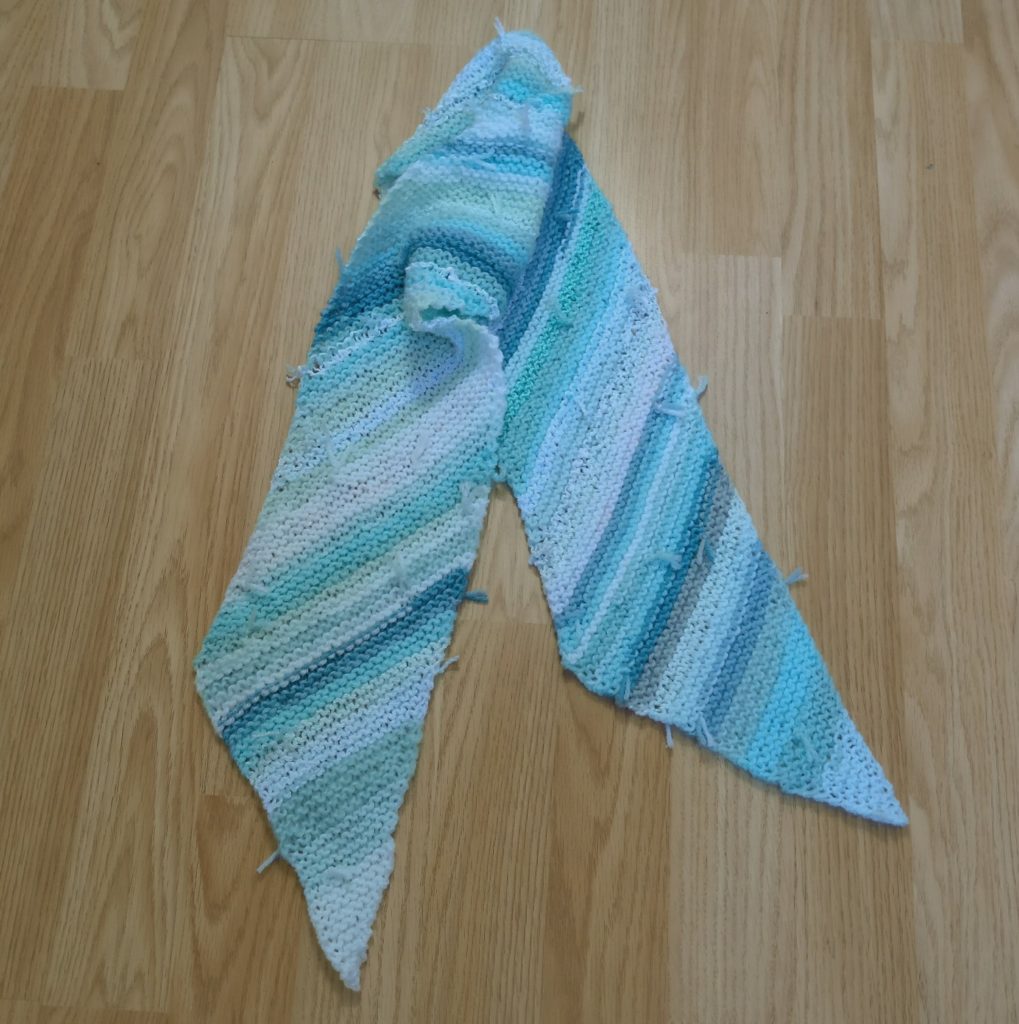I was given lots of this particular yarn about twenty years ago and always thought it wasn’t really my kind of thing because it was a bit sparkly. It is very dark, possibly black, with a slightly sparkly blue thread running through it.
I used the yarn recently to make some slippers and realised that when you stand a little way back it doesn’t really look sparkly at all … so I decided to use it for the shawl. It is DK thickness and I used 5.5 mm needles. I wished afterwards that I had used one size bigger to make it even softer and more cuddly.
